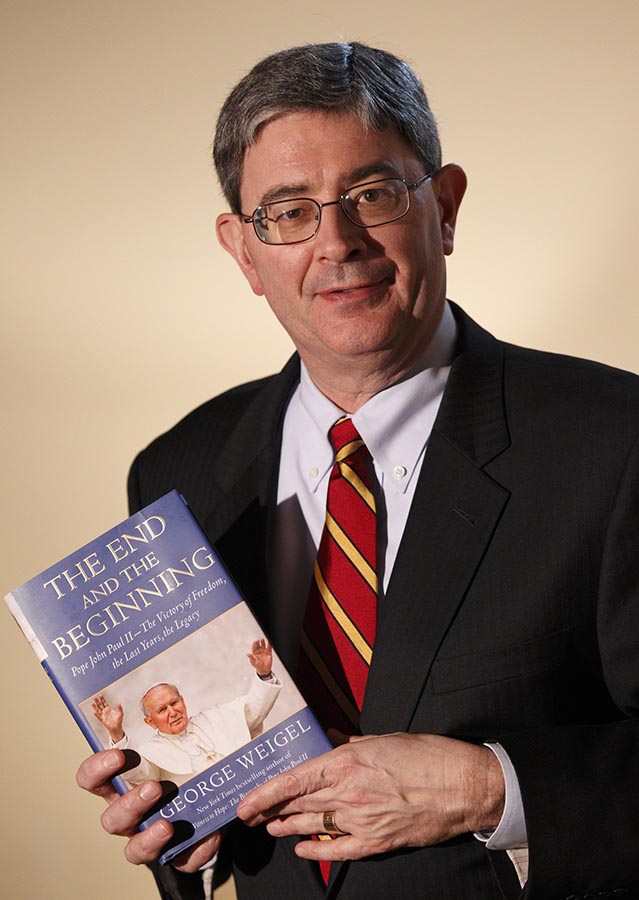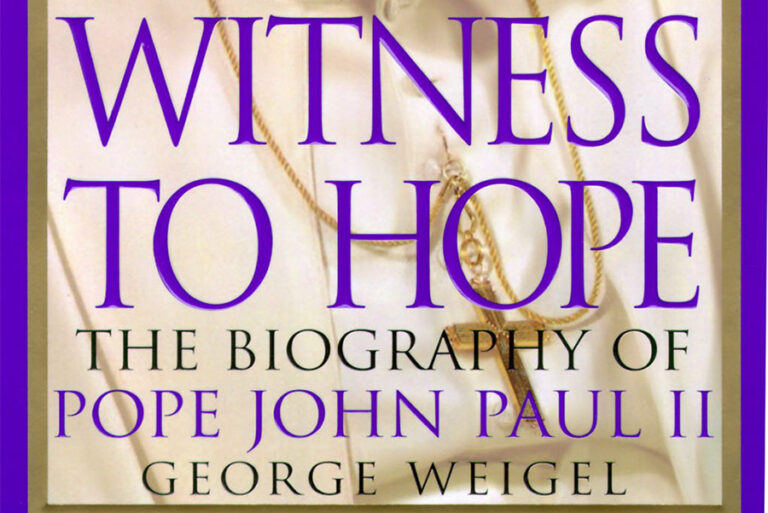My hands were shaky a quarter-century ago as I carried the heavy box from the front door of our house into my study. Inside were my author’s copies of Witness to Hope, the first volume of my biography of Pope John Paul II, and my mind was racing:

Did the editors catch the last corrections I sent? Did that scarifying misnumbering of the endnotes in one chapter get sorted out? Are there uncaught typos that made a mess of things? Steadying myself to open the box without cutting into the beautiful dust covers of a work that had absorbed three years of my life, a gratitude-inducing thought occurred: a lot of what had happened over the past forty-eight years had been a preparation for this moment. So after a prayer of thanks that calmed my nerves, I managed to get the box open without damaging any of its contents.
And there it was. With the support of my family, my Ethics and Public Policy Center colleagues, a host of new friends I had met in Rome, Poland, and elsewhere, and a superb editorial team at HarperCollins, I had kept the promise I made to John Paul II in 1996: that I would finish his biography in time for the Great Jubilee of 2000.
I had a very dry Beefeater martini that night.
It now remained to give the book to its subject. Which became another adventure, capped by an unforgettable moment.
Bishop Stanislaw Ryłko, a Cracovian serving as secretary of the Pontifical Council for the Laity, had been an immense help to me in traversing the Vatican rocks and shoals as I prepared Witness to Hope. And it was Ryłko who called me in Rome on September 23, 1999, saying that he and I were to dine with John Paul II at Castel Gandolfo the following evening at 7:30 – at which point I could give the pope the book. The good bishop and I left Ryłko’s office in the Palazzo San Callisto at 6 p.m. on the dot. Alas, the traffic out the Via Appia to the Castelli Romani crawled along at a snail’s pace, raising the embarrassing possibility of our being late to the papal board. But as we careened through the back entrance to the papal property and passed the charming papal cows (who lived in tranquility with several dozen papal chickens), a Vatican policeman stopped us as another car sped past on the road to the papal villa: it was John Paul II, returning from an evening swim in the pool he had built. (Some of the traditional managers of popes had quibbled about its cost; John Paul replied that he had to get some exercise and that a pool cost less than another conclave.)
I had three copies of Witness to Hope with me in a briefcase, one for the pope and the others for his secretaries. But as I sat down at the dinner table after John Paul’s typically rapid-fire Latin grace before meals, a previously unmeditated question occurred: What does a biographer say to his subject when giving him his life, so to speak?
No elegant resolution of this dilemma presenting itself, I walked around the table, gave the book to the pope, said something anodyne, like “Well, here it is,” and then offered copies to Bishop Stanisław Dziwisz and Msgr. Mieczysław Mokrzycki. I would like to report that an intense conversation ensued, but everyone immediately turned to the book’s photo section, and there was much chaffing about pictures of the now-balding Bishop Dziwisz with a headful of curly hair.
Leaving the dining room at the end of the meal, we went through the villa’s chapel, for whose side walls Pope Pius XI (the Holy See’s representative in Poland in his pre-papal life) had commissioned frescoes of two Polish dramas: the defense of the Jasna Góra monastery of the Black Madonna against the Swedish invasion of 1655, and the defense of Warsaw against Trotsky’s Red Army in 1920. Before settling into his prie-dieu for prayer, John Paul II drew me into an embrace that lasted at least a minute and a half. No words were spoken between us, but I heard Bishop Dziwisz say quietly to Bishop Ryłko, “Un grande lavoro” […a great effort], to which Ryłko replied, “Un lavoro d’amore” [A labor of love].
A quarter-century later, the memory of that silent embrace remains. So does my gratitude that Witness to Hope continues to strengthen the faith of Catholics and lead seekers to Christ and his Church.
Read More Commentary
Copyright © 2024 Catholic Review Media








